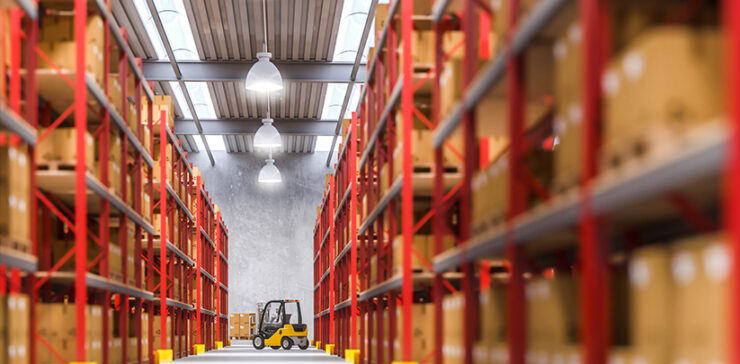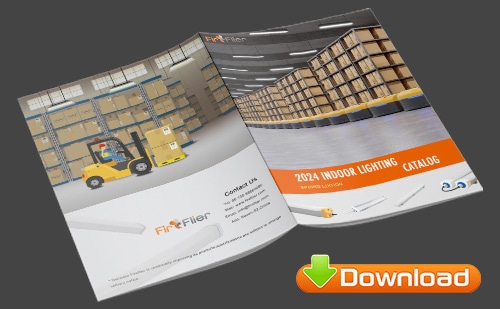In the fast-paced world of warehousing and industrial facilities, efficient and adaptable lighting solutions are crucial. One such solution that has gained significant popularity in recent years is dimmable LED warehouse lights. These versatile lighting fixtures offer a range of benefits, from energy efficiency to customizable lighting levels, making them an ideal choice for various applications. In this article, we will explore the concept of dimmable LED warehouse lights, their advantages, applications, factors to consider when choosing them, installation tips, and more.
Understanding Dimmable LED Warehouse Lights
Dimmable LED warehouse lights are lighting fixtures equipped with Light Emitting Diode (LED) technology that can be adjusted to produce different levels of brightness. Unlike traditional lighting options, such as fluorescent or incandescent lights, dimmable LED warehouse lights allow users to fine-tune the illumination according to their specific needs. This ability to control brightness provides enhanced flexibility and energy efficiency.
Benefits of Dimmable LED Warehouse Lights
Energy Efficiency
One of the key advantages of dimmable LED warehouse lights is their exceptional energy efficiency. LED technology is known for its low power consumption, converting a higher percentage of electrical energy into light compared to traditional lighting options. By dimming the lights when full brightness is not necessary, energy usage can be significantly reduced, resulting in lower electricity bills and a smaller carbon footprint.
Cost Savings
The energy efficiency of dimmable LED warehouse lights directly translates into cost savings. By using less electricity, businesses can reduce their energy expenses, contributing to long-term financial benefits. Additionally, the extended lifespan of LED lights means reduced replacement and maintenance costs compared to traditional lighting options.
Customizable Lighting Levels
Dimmable LED warehouse lights provide the convenience of adjusting lighting levels to suit specific tasks or preferences. Whether it’s maximizing brightness for detailed work or creating a softer ambiance for a more relaxed environment, dimmable LED lights offer the flexibility to adapt to changing lighting needs. This customization allows businesses to create comfortable and productive spaces tailored to their requirements.
Applications of Dimmable LED Warehouse Lights
Dimmable LED warehouse lights find applications in various settings beyond warehouses. Let’s explore a few notable examples:
Warehouse Lighting
Warehouses often require uniform and bright lighting to facilitate safe and efficient operations. Dimmable LED warehouse lights offer the ideal solution, allowing workers to adjust brightness levels based on specific tasks or areas. From loading docks to inventory areas, these lights provide excellent visibility while optimizing energy usage.
Industrial Facilities
Dimmable LED warehouse lights are equally suitable for industrial facilities, such as manufacturing plants and production lines. The ability to dim the lights provides better control over the lighting conditions, enhancing visibility for workers and improving safety. In addition, the customizable lighting levels can create different zones within the facility, optimizing illumination for specific tasks.
Retail Spaces
Retail environments often require adaptable lighting solutions to showcase products effectively and create an inviting atmosphere. Dimmable LED warehouse lights can help create the desired ambiance by adjusting brightness levels. Whether it’s highlighting specific products or creating a warm and cozy ambiance, these lights offer versatility to retailers.
Factors to Consider when Choosing Dimmable LED Warehouse Lights
When selecting dimmable LED warehouse lights for your specific needs, it’s essential to consider the following factors:
Dimming Compatibility
Not all dimmable LED warehouse lights are compatible with every dimming system. It’s crucial to ensure that the chosen lights are compatible with the existing dimmers or dimming systems in your facility. This compatibility ensures smooth and efficient control of brightness levels.
Light Output and Color Temperature
The light output, measured in lumens, determines the brightness of the LED warehouse lights. It’s important to select fixtures with appropriate light output based on the size and requirements of the space. Additionally, considering the color temperature, measured in Kelvin (K), allows you to choose lights with the desired warmth or coolness.
Lifespan and Durability
The lifespan and durability of dimmable LED warehouse lights are critical factors to consider. LED lights have an extended lifespan compared to traditional lighting options, resulting in reduced maintenance and replacement costs. Additionally, look for lights with sturdy construction and suitable protection against environmental factors to ensure longevity.
Installation and Maintenance
Consider the installation process and maintenance requirements associated with the dimmable LED warehouse lights. If retrofitting existing fixtures, ensure compatibility and ease of installation. Additionally, choose lights that require minimal maintenance, saving both time and resources in the long run.
How to Install Dimmable LED Warehouse Lights
The installation process for dimmable LED warehouse lights may vary depending on the specific fixtures and the existing lighting infrastructure. However, the following general steps can serve as a guideline:
- Step 1: Planning and Preparation: Assess the lighting needs and determine the appropriate fixture types, quantities, and locations. Prepare the necessary tools and equipment.
- Step 2: Safety Precautions: Before beginning any electrical work, ensure safety by turning off the power supply and following proper safety protocols.
- Step 3: Wiring Connections: Install the necessary wiring and make the appropriate connections according to the manufacturer’s instructions.
- Step 4: Mounting the Fixtures: Mount the dimmable LED warehouse light fixtures securely in the designated locations.
- Step 5: Power On and Test: Once the installation is complete, restore power to the lighting circuit and test the functionality of the dimmable LED lights.
It is recommended to consult a professional electrician or follow the manufacturer’s instructions for specific installation guidance.
Tips for Optimizing Dimmable LED Warehouse Lighting
To make the most of your dimmable LED warehouse lights, consider the following tips:
- Understand Lighting Needs: Identify the specific lighting requirements for different areas within your warehouse or facility to determine optimal brightness levels.
- Group Lighting Zones: Divide the space into zones based on lighting needs, and consider installing separate dimming controls for each zone. This allows more precise control and flexibility.
- Utilize Daylight Sensors: Incorporate daylight sensors that automatically adjust the brightness levels based on natural light availability. This helps maintain consistent illumination while minimizing energy consumption.
- Consider Smart Lighting Solutions: Explore smart lighting systems that offer advanced controls and automation options, allowing for remote management and scheduling of lighting levels.
- Regular Maintenance: Keep the dimmable LED warehouse lights clean and free from dust and debris to ensure optimal performance and longevity. Regularly inspect and replace any faulty components or bulbs.
By implementing these optimization strategies, you can maximize the benefits of dimmable LED warehouse lights in your facility.
Conclusion
Dimmable LED warehouse lights provide a versatile and energy-efficient lighting solution for various applications. With the ability to adjust brightness levels, these lights offer enhanced control, cost savings, and customizable lighting environments. By considering factors such as dimming compatibility, light output, and durability, businesses can choose the right dimmable LED warehouse lights for their specific needs. Proper installation and optimization tips further ensure optimal lighting conditions for improved productivity and safety. Embrace the brightness on demand and harness the advantages of dimmable LED warehouse lights in your facility.
FAQs
Can I dim LED warehouse lights without any additional equipment?
In most cases, dimmable LED warehouse lights require compatible dimming equipment or systems to adjust the brightness levels. It’s important to check the specifications of the lights and ensure they are compatible with the existing dimmers or dimming systems in your facility.
Are dimmable LED warehouse lights suitable for outdoor use?
Dimmable LED warehouse lights are primarily designed for indoor use. However, some models may be suitable for outdoor applications, depending on their IP (Ingress Protection) rating. It is recommended to choose lights specifically designed for outdoor use if illumination is required in exterior spaces.
Can I retrofit existing fixtures with dimmable LED lights?
Yes, it is often possible to retrofit existing fixtures with dimmable LED lights. Retrofit kits or replacement bulbs are available in the market that allow you to upgrade your current lighting infrastructure to energy-efficient LED technology. It’s important to ensure compatibility and follow the manufacturer’s instructions for proper installation.
Are there any government incentives for using dimmable LED warehouse lights?
Government incentives and rebates for energy-efficient lighting solutions vary by region and may change over time. It’s advisable to check with local authorities, energy efficiency programs, or utility companies to determine if there are any incentives available for installing dimmable LED warehouse lights.
How do dimmable LED warehouse lights compare to traditional lighting options?
Dimmable LED warehouse lights offer several advantages over traditional lighting options. They are more energy-efficient, resulting in cost savings and reduced environmental impact. LED lights also have a longer lifespan, require less maintenance, and provide customizable lighting levels. Additionally, they are more durable and eco-friendly compared to traditional lighting technologies.


